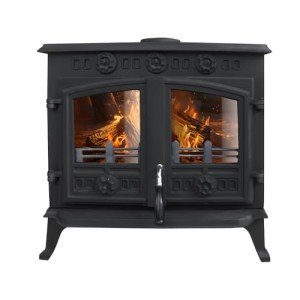How Contemporary Multi Fuel Burner Became The Hottest Trend In 2024
Understanding Contemporary Multi-Fuel Burners: A Comprehensive Guide
In the quest for sustainable heating options, contemporary multi-fuel burners have emerged as versatile gadgets that permit homeowners and companies to take advantage of available fuels. These burners can efficiently make use of numerous fuel types, including wood, coal, pellets, and more, making them an attractive choice for those looking to enhance their heating abilities while decreasing their carbon footprint. This article will check out the functional principles, benefits, setup factors to consider, and the future of contemporary multi-fuel burners.
What is a Multi-Fuel Burner?
A multi-fuel burner is a kind of heating gadget created to burn various fuel types while maintaining efficiency and security. Unlike conventional wood stoves or coal burners, contemporary designs are crafted to adapt to numerous fuels, allowing users to pick the most economically and ecologically feasible option based on their schedule or market rates.
Secret Features of Contemporary Multi-Fuel Burners
- Versatility: Can burn multiple kinds of fuels.
- Efficiency: Designed to optimize combustion efficiency across different fuels.
- Eco-Friendly: Reduced emissions when utilizing renewable energy sources.
- User-Friendly: Often equipped with advanced controls for easy operation.
Feature
Description
Fuel Types
Wood, coal, pellets, and more
Heat Output
Usually varies from 5kW to 12kW
Control Systems
Manual or automated temperature level control
Emissions
Low PM and CO emissions
Maintenance
Routine cleansing and periodic servicing
Advantages of Using Contemporary Multi-Fuel Burners
Cost-Effectiveness: Utilizing less expensive fuel sources can significantly lower heating expenses.
Environmental Impact: More efficient burning of fuels can lead to lowered greenhouse gas emissions, contributing to cleaner air.
Fuel Availability: Users can select their fuel based on local accessibility, permitting versatile heating solutions.
Durability: In times of fuel lacks, the capability to switch to eco-friendly fuels guarantees a consistent heating supply.
Possible Fuel Sources
- Biomass (e.g., Wood pellets or chips)
- Coal (e.g., Anthracite, Bituminous)
- Electricity (for additional heating)
- Natural Gas (in hybrid designs)
Installation Considerations
Setting up a contemporary multi-fuel burner needs careful planning and adherence to safety and regulatory standards. Secret factors to consider include:
- Location: Placement should make sure proper ventilation and heat distribution.
- Chimney System: An ideal chimney is needed for properly venting smoke and gases.
- Clearances: Must fulfill particular clearance requirements to walls and furniture.
- Fuel Storage: Adequate area need to be assigned for keeping different fuels.
Setup Steps:
- Site Assessment: Evaluate the area for the best positioning.
- Select the Right Model: Select a design matched for the designated fuel types and heat requirements.
- Professional Installation: Engage a licensed specialist for installation to guarantee compliance with local building regulations.
- Safety Checks: Once set up, conduct comprehensive safety checks on the system and exhaust.
Maintenance and Care
Keeping a multi-fuel burner is essential for performance and safety. Regular maintenance routines ought to consist of:
- Routine Cleaning: Remove ash from the combustion chamber and flue for effective burning.
- Examination: Regular checks for wear and tear in the burner system.
- Chimney Sweeping: Annual chimney cleaning is vital to prevent fire dangers.
Future of Multi-Fuel Burners
The future of multi-fuel burners looks promising as advancements in innovation continue to enhance performance and minimize emissions. Multi Burner as automated fuel feeding systems and wise innovations are being integrated, permitting much better control and monitoring of heating unit.
Furthermore, federal government incentives and programs supporting renewable resource use are most likely to increase the adoption of multi-fuel burners among eco-conscious consumers and businesses. The continuous research into even cleaner combustion approaches shows a substantial shift towards sustainable heating practices.
Regularly Asked Questions (FAQs)
**Q: Can I use any type of fuel in a contemporary multi-fuel burner?A: No, it is necessary to refer to the producer's standards on compatible fuels for optimal performance and security. Q: Are multi-fuel burners efficient?A: Yes, when correctly
installed and kept, multi-fuel burners can attain high combustion performance and produce lower emissions than traditional single-fuel systems. Q: How often ought to I perform maintenance on my multi-fuel burner?A: It is recommended to carry out regular cleansing after each use and perform an extensive evaluation a minimum of as soon as a year
. Chimneys should likewise be swept each year. Q: What type of fuel provides the best environmental benefits?A: Biomass fuels, such as wood pellets, generally offer considerable environmental benefits
**when sourced sustainably, as they are eco-friendly and can have a lower carbon footprint compared to fossil fuels. Contemporary multi-fuel burners represent an innovative option for sustainable heating in today's eco-conscious landscape. Their adaptability enables users to select from various
fuel sources, guaranteeing both financial and environmental advantages. Proper installation, maintenance, and adherence to security requirements are vital to make the most of the potential of these systems. As technology advances, the future of multi-fuel burners assures even greater efficiency and lower emissions, making them an enticing option for residential and business heating needs.  ****
****